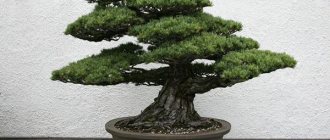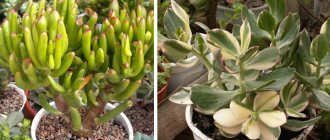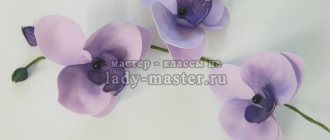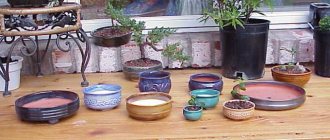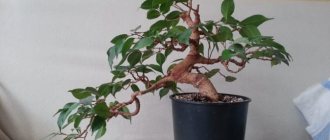Artificial trees will create beauty and comfort in your home.
When planning the design of your home, it is impossible to do without original little things. It is unusual crafts that bring a special charm, emphasizing any style or theme of design. Artificial trees are luxurious decorative elements, the role of which in the interior is difficult to overestimate
In addition to a subtle eco-friendly note, they are a good alternative to living plants and do not require careful care, creation of a microclimate or special conditions. There are many ways to make artificial trees with your own hands: bonsai, topiary, and many other creative ideas. Stylish hand-made crafts will help not only make the interior of rooms more comfortable, but also add fresh, informal notes to the design of a strict institution or office.
DIY bonsai
Experts and landscape designers recommend growing bonsai with your own hands from both coniferous and deciduous trees, the most common representatives of which are pine and maple; lilac, rose, and wisteria are a little less common. Growing bonsai from such crops is simple and requires minimal care.
Money tree bonsai is perfect for growing in the middle zone
Seed selection
Many plant growers are interested in how to grow and form bonsai from seeds at home to get a beautiful tree. The growing process takes several years; first, proper care is provided for the seeds, seedlings, and only then for the tree, and it is not always possible to grow it from seeds the first time.
When growing bonsai on the balcony, you should choose tropical plants: coffee tree, laurel, dracaena. Without experience, you will still be able to get a ficus bonsai due to the unpretentiousness of the plant. If you have even the slightest idea about the essence of the procedure, you can plant a pine tree, which grows slowly, but in the end it turns out to be a beautiful tree.
Selection of pot
Any container can serve as a pot for a bonsai plant - wooden, stones with a recess, clay, but it is better to give preference to ceramic pots. The basic rule when choosing the shape of a container for bonsai is that it should not be more beautiful than the plant. For tree crops, earthenware with different shades is suitable, for flowering crops - ceramics or clay of the appropriate color.
Note! Watering depends on the material of the pot; for example, a plant in a clay pot needs to be watered more often than in a ceramic one.
A bonsai pot made of any material should be spacious. The diameter of the round container should be 3 times the diameter of the trunk, and the depth should be about half the height of the tree. Pots of non-standard shape have a width of approximately 2/3 of the tree crown. Moreover, strict adherence to the size of the pot is required only for adult plants.
Priming
For coniferous trees, the soil is prepared drier and contains sand, flowering and indoor varieties - an organic substrate. In any case, the soil for bonsai varieties should be easily permeable to moisture and have a drainage system.
Sand from the banks of reservoirs, fine and crumbly, works well. Construction sand with a high lime content is not suitable for planting bonsai.
Important! To neutralize the soil from the fungus, you need to heat it in the microwave for about 5 minutes.
Do I need to fertilize bonsai?
Since trees are grown in relatively small pots, they need feeding, especially during the growing season. The optimal fertilizer for bonsai should contain nitrogen, phosphorus, and potassium, which are contained in almost all fertilizers, but for different plants it is worth considering their proportions.
Feeding with fertilizers begins in early spring and continues until mid-autumn. Indoor species can be fertilized all year round.
Step-by-step algorithm for applying dry fertilizing:
- Sprinkle on the surface of the soil around the plant.
- Pour plenty of water on top.
Important! It is necessary to fertilize bonsai, but given the limited amount of soil, strictly in recommended doses so as not to harm the plant.
Where to begin
Growing begins with the need to germinate bonsai seeds, which should be treated against pests and diseases. The period depends on the plant, some will take more than five years. You can reduce the germination time by breaking the seed coat to facilitate germination.
Advantages of ornamental trees
In the old days, people said that a craftsman and a craftsman brings joy to himself and others. Unique handmade items are always a valuable and welcome gift. Creating ornamental trees is a special art, thanks to which bright gardens bloom in lush colors all year round. Decorating your design with unusual crafts has many advantages:
- With the help of original details, you can breathe new life into your home interior and refresh it without any special financial costs.
- Artificial trees will retain their original beauty for a long time without requiring special care. They do not depend on weather conditions and delight the eye with their beauty.
- Decorative details will help harmoniously complement the stylish modern design even in a simple office space.
Decorative trees will breathe new life into your home interior.
Looking at the skillful ornamental plants presented in stores, it’s hard to believe that you can make them yourself. Don't rush to spend money on designer crafts. We will reveal the secrets of this work, offer several original ideas, as well as simple master classes, during which you can “grow” many wonderful trees with your own hands.
Crown shapes
Automatic watering for indoor plants - do it yourself
Shapes (styles) of crowns for bonsai:
- fan;
- formal vertical;
- informal vertical;
- inclined;
- cascade;
- semi-cascade;
- Bohemian;
- tree bent by the wind;
- double barrel;
- multi-barreled;
- grove or group planting;
- roots on a rock;
- tree on stone;
- fallen tree;
- dead wood.
Growing conditions
In order for seedlings to grow and develop properly, a number of conditions must be observed.
Illumination
Plants have different light needs, take into account their characteristics. Pay attention to the location of windows in the apartment. Make sure they get 3-4 hours of light per day. Protect from direct sunlight. If the dwarf stands on southern or southeastern windows, then the plant should be shaded from noon to four o'clock in the afternoon.
In autumn and winter, arrange lighting. Change window sills and rotate plants once a month.
Humidity
City apartments have dry air, so it needs to be humidified. Place trays of water next to flower pots. Follow the watering regime. Water your bonsai by dipping it into a container of water, then drain off the excess water. In summer, water generously as the top layer of soil dries. In winter, water rarely and sparingly.
When does a plant need to be replanted?
DIY drainage for indoor plants
If the bonsai grows in open ground, it does not need to be replanted, but in a limited volume, replanting is necessary so that the roots do not intertwine. This procedure is considered planned, that is, it occurs regularly at a scheduled time and depends on the age, size of the tree and pot, as well as the type of plant and nutrient soil.
For your information! Young plants, no older than 4 years, are replanted every spring, when the growing season begins, adult plants - once every 10 years. The signal for replanting is roots sticking out of the drainage hole and leaves starting to fall off.
There is another type of transplantation - emergency, it is carried out when the plant is sick or the roots have rotted.
Study the materiel (buy a book)
A beginner in this art should purchase several tools for shaping wood:
- Three types of nippers: concave, convex, straight nippers. They are used to cut wires, branches, parts of the trunk, and roots.
- Root trimming scissors. Trim thin roots.
- Tweezers with a curved tip. Remove excess buds, leaves, and pine needles.
And, of course, buy a good book.
We can recommend the following authors:
- The book “Secrets of Bonsai. A Guide to Growing and Shaping Bonsai,” written by art guru Masakuni Kawasumi II along with his son Masakuni Kawasumi III. They talked about the basic techniques for creating bonsai, and shared their secret methods that their family members use.
- "The Art of Bonsai." Russian author Lesnievich P. introduces the reader to the living art of bonsai, Japanese philosophy, and caring for dwarf trees.
Juniper bonsai
Available for cultivation by both experienced growers and beginners. This bonsai does not need frequent watering in winter, and there are no special requirements for humidity, temperature and lighting. Unpretentiousness is its advantage.
DIY drip irrigation for indoor plants
In winter, the tree needs rest more than watering, and therefore the soil should dry out during this period. Despite the unpretentiousness of maintaining a juniper bonsai, the tree requires little attention and minimal watering.
For your information! The soil is checked every day using toothpicks. By lowering the stick 1.5 cm into the soil and holding it for 10 minutes, you can determine how dry the soil is. If the removed stick becomes wet, watering should not be carried out; if it is dry, it means that it is time to water the plant.
Juniper soil for bonsai is no different from soil for other species, but the plant, even during the winter period of inactivity, cannot do without sunlight. In winter, 4 hours of exposure to sunlight will be enough for juniper.
Feeding juniper
Juniper, like many representatives of the Cypress family, is unpretentious to the soil, but in some cases it needs fertilizing. Young trees, as well as those transplanted due to their weakness and susceptibility to diseases, need fertilizer, which is applied throughout the season, starting a month after transplantation. Different varieties of juniper require different types of soil. Peat and sand mixed with wood shavings are added to an acidic environment, and slaked lime is added to an alkaline environment.
Fertilizer application
How to make a juniper bonsai: crown formation
The crown is formed using wire. The main rule is not to get carried away and remember that the tree is constantly growing, therefore, you need to boldly remove interfering shoots and follow the wire on the soft structure of the trunk.
Japanese euonymus
The favorite garden shrub, Euonymus japonicus, does not lose its charm in bonsai. Of all the types of euonymus, the Japanese euonymus creates the most attractive silhouettes, forming charming single-trunked or multi-trunked living sculptures.
Japanese euonymus is used for living rooms, greenhouses and staircases with foyers.
Japanese euonymus in bonsai form is represented by small-leaved and variegated forms; yellow-leaved aurea are also often found. This densely bushy plant with dark bark allows the formation of multi-stemmed trees, but even when creating a solitary “tree”, the euonymus surprises with its grace and complexity of silhouette.
The bark is dark, matte, very attractive, the lower part of the shoots is usually bare, and the crown seems weightless and very light. The height of euonymus ranges from 15 to 50 cm. The leaves are typical for this plant, oval-lanceolate, glossy, with dark, variegated or bright colors. This type of bonsai blooms in June-July.
Good lighting is necessary for euonymus regardless of the time of year. Euonymus prefers fresh air from May to October. In this case, the plant can only be placed in protected places. The Japanese euonymus does not tolerate complete drying out of the substrate, but watering must be done very carefully (light, rather frequent and meager watering is preferable).
The dense bushiness in bonsai form is the result of hard work. Young branches of euonymus tend to stretch, so they are pruned often, stimulating branching. If you want to create a more interesting silhouette, this type of bonsai can be rewound with wire.
Japanese euonymus bonsai overwinter only in coolness, but relative coolness. The minimum temperature value is 10 degrees Celsius for varieties with uniform color and 15 degrees Celsius for variegated and originally colored bonsai.
Ficus bonsai
The choice of ficus is quite reasonable, because it is distinguished by branched roots, a massive trunk with a bend or floridity, beautiful smooth or textured bark and fast growth, and therefore is well suited for growing in miniature and is easy to shape. Ficus is not demanding of sunlight; morning sun rays are more suitable for it, while daylight can cause leaf burns.
Ficus benjamina bonsai
What types of ficus are suitable for bonsai?
Among the ficus varieties suitable for such growing are Bengal, rusty red, blunted and Benjamin. It is best to grow bonsai from the latter species, which has all the characteristics for obtaining a dwarf tree: small leaves, fast growth, beautiful roots and bark.
Shape selection
Bonsai differs from an ordinary plant not only in its miniature size, but also in the shape of its trunk, giving the impression of a century-old tree. The classic form, without branches at the bottom and bends, grows upward. The irregular upright style is characterized by a small crown that does not extend beyond the pot and a curved trunk. The leaning form can lean at any angle and have roots on the surface. The forked form of bonsai involves the growth of two trunks from one root.
A Practical Guide to Shaping a Ficus Tree
The process of shaping a ficus bonsai consists of processing the roots, crown and trunk. In order for the tree to grow in width, the roots of a young plant must be cut until the thickening of the trunk is noticeable. Then, armed with sharp scissors, you need to trim the leaves along with the stems. Pruning is carried out in spring and summer, and in winter, when the plant gains strength, it is better not to disturb it.
Next, a trunk is formed using wire. The garter is suitable for bending the tree, and the frame wrapping helps strengthen the branches for the desired shape.
Note! When making a frame that lasts for two months, you cannot wind the wire very tightly to avoid it growing into the trunk. It is not recommended to put on the frame immediately after planting the plant; you need to wait a few weeks.
Topiary with candies
The highlight of this craft is that you will get not just a decorative product, but also a kind of vase for sweets. This option is perfect as a delicious gift for children, girlfriends, mothers, grandmothers, and loved ones.
Preparation
To make wood, take:
- Ball;
- Scissors;
- Double sided tape;
- Beautiful caramels (without wrappers);
- Stick for the trunk;
- Pot or box for base;
- Pot filler;
- Ribbons, paper and fabric flowers and any other decorative details.
The process of making topiary
- Make a hole in the ball for the barrel.
- Cover the ball with double-sided tape.
- Glue caramels on it.
- Fill the free space with decorative elements.
- You can also decorate the trunk at your discretion.
- Place the stick-trunk in a pot or box, cover everything on top with cotton wool, cardboard or something else and decorate with caramels, only in wrappers. Ready!
Money tree bonsai
It is possible to make bonsai from Crassula, which is large in size, even in small spaces. This plant is well suited for bonsai techniques, with which you can get a compact plant with an original shape.
Description of Crassula and types for bonsai
Crassula, or money tree, reaches 1.5 m in height. It has thick stems about 20 cm in diameter. The plant is valued for its low maintenance requirements and decorative gray-green leaves of various shapes.
Hydrators are located over the entire surface of the leaf. There are 350 species of Crassula found in nature; indoor trees are divided into tree-like and creeping. The miniature tree technique uses tree-like crassulas.
Preparation of planting material
The trees do not exceed 200 cm in height and have a thick, curved trunk, like that of an adult tree, so before planting the money tree must be properly pruned and then the shape of the crown must be maintained.
Planting a plant in a prepared substrate
For a money tree bonsai, the soil should be well-drained, contain peat and fertilizer for rapid growth of leaves. You can buy ready-made soil; a substrate for cacti is perfect.
The container for bonsai must be chosen wide and shallow in view of preliminary trimming of the roots to the shape of the pot. When planting, do not deepen the root collar. At the end of replanting, the plant must be watered thoroughly.
Crown formation
In order for a Crassula tree to become a real decoration, it is necessary to prune it correctly, protect it from sunburn and form the trunk in a timely manner. It is better to grow miniature crassula from a sprout, then it will be easier to create the desired style. But in any case, the plant is subject to certain rules for the formation of the crown, giving it the necessary harmony, combined with a natural appearance.
Formation of the Crassula crown
Satin ribbons
This tree will be a wonderful decoration for a wedding celebration. It's very easy to make. It is enough to show a little patience and imagination. The only difficulty that can arise is making flowers from satin ribbons.
So, to create a topiary you will need:
- About seven meters of satin ribbons.
- Threads, beads, yarn, lace for decoration.
- Glue.
- Wooden stick or plastic pipe.
- Flower pot.
- Crumpled newspaper or papier-mâché.
- Earth, decorative stones, shells.
Progress:
- According to the photo above, flowers are made from ribbons. On average, one topiary will require 15-19 roses.
- Now the crown is made. You can take ready-made papier-mâché, or you can crumple newspaper into a ball shape. The workpiece should be wrapped with yarn for greater density.
- The trunk is made from a branch or plastic pipe. Then it is wrapped with ribbon or decorated with lace.
- Next, using glue, the trunk is glued to the crown of the tree. The bottom of the trunk is placed in a pot and covered with earth and pebbles to make it heavier.
- Using threads, satin roses are sewn to the crown. In order for the flowers to hold more firmly, the workpiece is additionally fixed with glue.
- The pot is decorated with bows, lace and yarn. Flowers should be carefully straightened and, if necessary, decorated with decorative ribbons and rhinestones.
Bonsai carmona - the most popular plant
Carmona is most widespread among plants formed using the miniature tree technique. The popularity of this tropical plant is facilitated by the lack of specific methods of keeping it at home and its attractive appearance.
Why Carmona is suitable for beginners
Carmona bonsai is an evergreen bush or tree with shiny dark green leaves, blooming several times a year, bearing bright small berries, great for beginner bonsai growers due to its unpretentiousness and ease of growing.
Unpretentious plant for bonsai
Carmona can grow in shady places, it only needs a few hours of sunlight a day, and in the right light it blooms all year round. Due to its resemblance to the tree, carmona is chosen by many bonsaiists.
Temperature and lighting
Carmona is a tropical plant, and therefore is thermophilic, but can withstand temperatures up to 10°C. In winter, carmona needs to be provided with at least an hour of sunlight.
Growth rate
Along with the azalea bonsai, carmona will grow for several years and with proper care you will be able to get a beautiful bush.
Bonsai carmona
Earth mixture
You can transplant carmona into bonsai soil by choosing a clay substrate, made yourself from garden loam, and you can also use heather, turf, leaf soil, or buy ready-made soil.
Note! Carmona can also grow in an inorganic substrate, but subject to constant feeding. It is important that the soil does not contain lime, which can lead to plant diseases.
Types of karmona for indoor cultivation
For miniature equipment, the cultivation of highly branched small trees, reaching a height of up to 4 m and growing up to 70 years, is excellent, of which the most popular are small-leaved carmona or large-leaved carmona. The maintenance of such plants, which bloom year-round at room temperature, is no different from caring for myrtle bonsai.
Zanthoxylum
This plant is also known to us as yellowwood and pepper tree, although the fragrant leaves of the plant do not smell like pepper, but like lemon, since zanthoxylums are relatives of citrus fruits. It is this crop that brings the harvest of the legendary Sichuan pepper.
Zanthoxylum is often viewed as a plant for greenhouses only, but in fact, it is one of the most unpretentious types of indoor bonsai.
Pepper tree is an evergreen tree and shrub, most often grown in bonsai as a tree with a single trunk. The plant is characterized by beautiful, dark bark with an unusual golden-grayish tint and a very dense large-leaved crown.
The feathery leaves of Zanthoxylum, which emit a pleasant lemon aroma when touched, are dark green in color and can reach a record length of 15 cm for a bonsai. Zanthoxylum blooms from April to June. The plant produces dioecious golden flowers in small panicles of inflorescences.
For bonsai, you need to ensure stable soil moisture by watering frequently, but with a small amount of water. Rainwater is more suitable for zanthoxylum. When choosing conditions, it is worth focusing on the brightest window sills - sunny places, regardless of the time of year. Zanthoxylum should be protected from exposure to air conditioners or heating devices. The plant does not have to be taken out into the fresh air for the summer.
The formation of zanthoxylum must be carried out constantly, pruning young branches to create the desired silhouette. If the plant has been shaped to a certain shape, then the young shoots are cut back to their original contours, preventing them from growing in length.
In winter, zanthoxylums are kept cool, but the plant cannot tolerate temperatures dropping below 10 degrees Celsius. The optimal temperature value is from 12 to 15 degrees.
Ammania - bonsai in an aquarium
Ammania, or rotala indica, is a plant with green leaves with pink tips. The aquarium serves as a pot for bonsai - a mix of breeding indoor fish and house plants. Both a regular and a nano aquarium are suitable for cultivation. Ammania bonsai often looks like a thick carpet and is a favorite plant for aquarium design.
Conditions and care for ammania
Ammania is a fragile plant that is not recommended for planting in an aquarium with large fish, otherwise they may damage the bonsai. How to accelerate growth? The solution is to supply more carbon dioxide.
Bottom substrate
Sand of a fine and light fraction of no more than 3 mm with a nutritious substrate, which is ideally fertilized with iron, is suitable as soil for ammania. You can take ready-made nutrient soil for bonsai. Ammania will bloom singly in four tiny cups.
Water temperature, hardness and lighting
The annual plant is adapted to the usual parameters of fresh water, where the pH is 6.0-7.5 and the hardness is from 3 to 8. The ideal water temperature is no more than 28 °C, but not lower than 22 °C. For normal growth, it is necessary to organize lighting with a full spectrum, and with weak light the stem and leaves will stretch. The bonsai shoot needs to be provided with strong light of 1 V per 1 liter of water.
Ammania cuttings
Ammania bonsai is not grown with seeds due to special growing conditions, so it requires special care and propagation. Further growth depends on proper cuttings, so it is necessary to pinch off the fleshy main trunk of the plant with narrow leaves located on it. By carefully cutting the cutting and placing it in the substrate, roots will appear on it, after which you can plant it in the prepared soil. Planting occurs with compaction into the substrate, but without pressing down the roots.
Ammania cuttings
Growing living decorations is a fascinating, but difficult activity. Sometimes this takes several years. That is why, in the first couple of years, it is important to decide on the type of plant and the features of its care, so as not to suddenly ruin many years of work with incorrect actions.
Materials and tools
Having decided on the shape and color of the future masterpiece, you need to prepare everything you need for work:
- Set of multi-colored beads;
- Thin wire for stringing beads;
- Thick insulated wire to form the main frame;
- Cord or tape for braiding the trunk;
- Gypsum or alabaster to form the base and secure the wood;
- Acrylic paint and clear acrylic varnish;
- A pot, deep dish or other container for placing the composition;
- Decorative elements.
Additionally, you will need a piece of cellophane, a glue gun for fixing decorative elements, wire cutters, brushes and protective gloves. Beginners are also advised to keep a beaded bonsai weaving diagram on hand.


